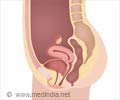The cause of pelvic organ prolapse is due to the combination of a loss of elasticity and breakdown of proteins that are present in the vaginal wall, says a gynecologist.

"We found that the protein fibulin-5, which until now simply has been known to be important in generating elastic fibers, actually blocks the enzymes that degrade proteins that support the vaginal wall structure," said Dr. R. Ann Word, professor of obstetrics and gynecology and a co-senior author of the study in May edition of the Journal of Clinical Investigation. "The elastic fibers do play a role, but it's also the enzymes that degrade the matrix that break down both collagen and elastin over time."
More than 225,000 inpatient surgical procedures for pelvic organ prolapse are performed each year in the U.S. at an estimated cost of more than $1 billion. But surgery alone is not always effective in the long run; nearly 30 percent of women report continued problems over a five-year follow-up period because the underlying problem of matrix support has not been corrected. There are no current therapies to prevent the progression of prolapse.
Age and vaginal delivery are the two most common risk factors for prolapse; injury to the vaginal wall may occur during childbirth but prolapse often doesn't occur until decades later. Obesity and menopause are also contributing factors.
"We still don't understand why patient A has a terrible delivery, with a large baby, but she never gets prolapse. And then we see patients who are 28 with no children, and they're already starting to have problems. So we know genetic and environmental factors contribute to this," Dr. Word said.
Using mice, researchers tested how fibulin-5, a protein that is essential for elastic fiber assembly, regulated the activity of matrix metalloprotease-9 (MMP-9), a group of enzymes that break down the matrix of collagen and elastic fibers, leading to a loss of the structural support of the vaginal wall.
Advertisement
"Matrix assembly of the vaginal wall is a very complicated process," said Dr. Hiromi Yanagisawa, assistant professor of molecular biology and the study's other co-senior author. "We need to decode what is necessary in this process, but degrading enzymes are the main therapeutic focus."
Advertisement
Source-Eurekalert













